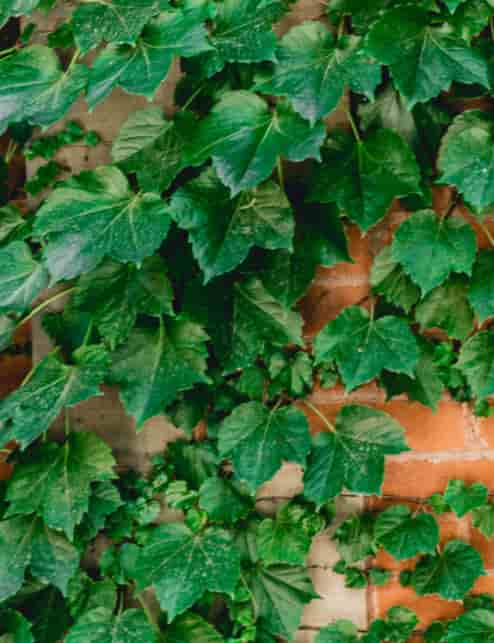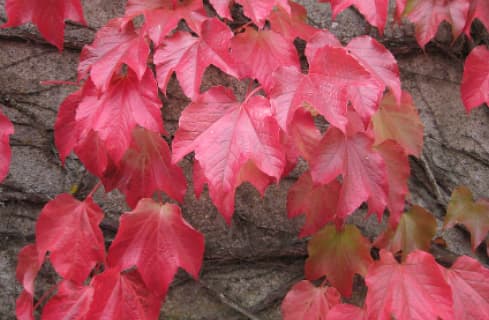English ivy vs boston ivy (Differences & similarities)
Differences between english ivy and boston ivy are, english ivy is an evergreen climbing plant. Again boston ivy is a flowering plant and can climbing larger than boston ivy. Fruits of english ivy is purple black or orange yellow, where the boston ivy fruits are dark blue.
English ivy and Boston ivy both houseplants exhibit dark green foliage. Boston ivies turn into red-colored foliage in Autumn. Both of them have climbing qualities but with different procedures. They will produce fruit and flower but there also remain a lot of differences.
After studying the whole article, you will get all the details information about them.
English ivy vs Boston ivy
Because of the greenish appearance, English ivy and Boston ivy almost look the same.
But some differences can end your doubt. Step by step we will be clear about all these differences.
Before that, we should have some primitive knowledge about English ivy and Boston ivy.
The botanical name of English ivy is Hedera helix. On the other hand, Parthenocissus tricuspidata refers to the scientific or botanical name of Boston ivy.
English ivy can be said as European ivy, common ivy or ivy also. It is of the Araliaceae family. English ivy is native to Western Asia and Europe.
On the contrary, Boston ivy is native to Eastern Asia, especially Korea, Japan and China. It is also known as grape ivy, Japanese ivy, Japanese creeper, woodbine etc. Boston ivy belongs to the Vitaceae family.


Why are we discussing the term English ivy vs Boston ivy?
English ivy and Boston ivy both are popular versatile houseplants. But they have a lot of similarities.
From a general perspective, they are hard to differentiate for many persons. Else, some other topics are related to their all-over nourishment.
The differences will help someone to choose the perfect plant that they want. This article is presented before you for this reason.
Basis for comparison
Well, it is time for informing you about the basic points which differ between these two plants.
Despite having lots of similarities, they are supposed to be at two poles.
Outlook
The external morphology, simply saying the physical outlook is the main theme for which a plant is particularly identified.
Some points of their outlook are mentioned below-
Plant type
The English ivy plant is an evergreen climbing plant. You can nurture it as a beautiful ornamental plant in your house. Wood portions are not well established in English ivy plants.
Besides, Boston ivy is a flowering plant. It is a deciduous plant. It can be said as a woody vine.
Plant height
English ivy is a fast-growing plant. A good amount of sunlight with its required things can enrich the invasiveness lied between English ivy plants.
The average plant height of English ivy plants is around 20-30 meters that are 66-98 feet.
This measurement is available where suitable surfaces such as walls and cliffs are present. But it grows as a ground cover where such surfaces are not available.
Boston ivy plants can easily grow up to 30 meters. They are found larger than English ivy plants. But they are not invasive.
Climbing procedure
Both the plants have their mechanisms for climbing on any surface. This makes them different despite having almost the same height.
The English ivy plants produce aerial rootlets in them. Some matted pads are attached to these rootlets.
These pads strongly hold the surface or substrate and the plant can easily grow with the help of the surface.


The Boston ivy plants follow a different technique for their development. They produce branched tendrils. The tendrils are small and sticky disks are attached to them.
The plant grows upward with the help of these tendrils. Apart from these, the plant produces calcium carbonate. This chemical helps it to attach to the wall without any help.
This attachment doesn’t create any problem for the wall as they don’t penetrate the wall. Calcium carbonate is used as one kind of gummy substance.
Thus the two types of plants manage their growth in two different systems.
Leaves
Leaves are the main attraction of English ivy and Boston ivy plants as they are familiar with ornamental plants.
English ivy plants are alternate in their arrangement. They are petiolate. That means they are attached to the stem with a long stick that is 50-100mm in size.
The leaf is palmately structured with a size of 2-4 inches. In the climbing stem, the leaves are five-lobed juvenile shaped.
But the flowering stems possess different kinds of leaves that are unlobed and cordate.
These cordate-shaped leaves are well distributed in the crown of the trees which achieve maximum sunlight.


English ivy leaves are enriched with gentle green color that gives a special charm to the plant.
Whatever now we should know something about Boston ivy leaves.
You will get similarities between them. But if you notice exquisitely, you will find that the leaves are palmately lobed but those are not like English ivy fully.
The lobes are separated into three portions. Sometimes five-lobed leaves are also found but the leaf surface is smoother than the English ivy.
Again, the leaves of the whole plant are generally equally distributed and shaped. Types such as English ivy are not seen.
The leaves are beautifully green colored and 5-22 cm in size.
Blooming time
The blooming time for English ivy is late summer to late autumn.
It is like a colorful picture that you can enjoy for a long time.
But Boston ivy doesn’t bloom for as many days as English ivy. They bloom from June to July
Flower
The flowers are another attraction of English ivy. The greenish-yellow flowers are small in size.
The umbel diameter of English ivy flowers is around 1.5-2.5 inches. They are enriched with nectar.
The flowers are produced in clusters. They are greenish white-colored. The flowers are small-sized.
Fruit
Purple-black or orange-yellow berries– you can have these from the English ivy plant. The fruit set occurred in late winter.
The fruits are also small in size as they are 0.2 to 0.3 inches(6-8mm) in diameter. These fruits are a great source of food for birds and some animals.
Well, Boston ivy fruits are dark blue. They are called grapes. The grapes are around 5-10 mm long which is a little larger than English ivy fruits.
They are used for the production of wines.
Availability
Many of us want to know which is the most available variety between them?
The answer is the Boston ivy. As it is easy to grow, it has a great demand over the world. That’s why it is more available than English ivy.
Foliage stability
The foliage stability denotes the fact of holding the greenish beauty of the plant.
The English ivy plants always remain green at any season or any stage of their maturity.
But the Boston ivy plants are different from them. As autumn foliage, you will have red-colored foliage in the Boston ivy plant while the English ivy always remains dark green.

Well, if you want something different look in different seasons for your house, Boston ivy should remain in the top position of the plant list.
Caring
English ivy and Boston ivy plants’ caring differ from one another in some major portions.
The same element varies in amount for their proper growth and development.
Sunlight
English ivy plants grow better in medium sunlight. Direct scorching heat should not be fall on the leaves which may be harmful to them.
Boston ivy plants like to grow in a shady places.
This sunlight requirement is for those plants which are kept as indoor plants.
Outdoor plants can tolerate sunlight. But excessive heat harms them.
Temperature
English ivy is native to a cool temperate region. So they can tolerate the low temperatures.
But if the Boston ivy faces a temperature below 10°c, it cannot tolerate and loses its turgidity.
Humidity
The English ivy is a humid-loving plant. They can grow well in high humidity whereas Boston ivies normally love to grow in medium humidity.
Watering
You should water your English ivy plant regularly when it is dry. Normally this plant needs more water than the Boston ivy plant.
Varieties
Around 400 varieties are found under the English ivy. Among them, some varieties are usually found.
Buttercup, Thorndale, Goldheart, Cascade, Irish lace, Brokamp, Ceridwen, Domino etc. are popular varieties under English ivy species.
Some varieties are also included in the Boston ivy plant. Veitchii, Purpurea, Green Spring, Atropurpurea, Green showers, Fenway Park etc. are well-known varieties of Boston ivy species.

Importance
English ivy plants’ importance is beyond description in various spheres of mankind.
The plant extracts are used as an element of producing cough medicines.
Different metabolic elements like falcarinol, alpha and beta hederin, chlorogenic acid, emetin, caffeic acid, rutin etc. are present in the English ivy plants which are useful for human beings.
This plant is also used for ornamental purposes for its different look. It will give a reflection of nature to your house.
Then, what about the Boston ivy?
Boston ivy plants are widely cultivated as ornamental plants because of their flower and foliage.
Apart from the ornamental uses, they are also important for some definite purposes.
In summer, they are used to keep the walls cool as they can live in full sunshine.
Which is the best houseplant of them?
A lot of discussions over the English ivy and Boston ivy are included here. After that, a critical question generally arises which is the best between them?
This question will definitely vary from person to person as peoples’ choices, tastes and other bases.
According to varieties, uses, flowering the English ivy may be considered better than the Boston ivy.
But at the same time, the Boston ivy also possesses some benefits that may be given priority to an English ivy plant.
A Boston ivy is much easier to grow than an English ivy plant. Besides, it will provide you with different colors.
So, it is better to think about yourselves and choose the one that you want to keep as your houseplant.
Final thoughts
So, what is your impression about the English ivy vs Boston ivy?
In a nutshell, both of the plants are equally enchanting when you are supposed to define them.
The main factors are the extremely pretty outlook that leads people to use them as houseplants.

![Do Deer Eat Coleus? [!Fun Facts Explained]](https://diaryforgardening.com/wp-content/uploads/2022/02/Do-Deer-eat-Coleus.jpg)
![Alocasia black velvet leaves curling [5 effective solutions]](https://diaryforgardening.com/wp-content/uploads/2022/09/Alocasia-black-velvet-leaves-curling-.webp)
![Philodendron florida beauty vs florida ghost [Differences & similarities to identity ]](https://diaryforgardening.com/wp-content/uploads/2022/09/Florida-beauty-vs-ghost.webp)
![Why are my Monstera deliciosa leaves curling? [Solve NOW!!]](https://diaryforgardening.com/wp-content/uploads/2022/03/Monstera-deliciosa-leaves-curling.jpg)
![Alocasia vs Anthurium [Differences & similarities to Identify perfectly]](https://diaryforgardening.com/wp-content/uploads/2022/09/Alocasia-vs-Anthurium.webp)

